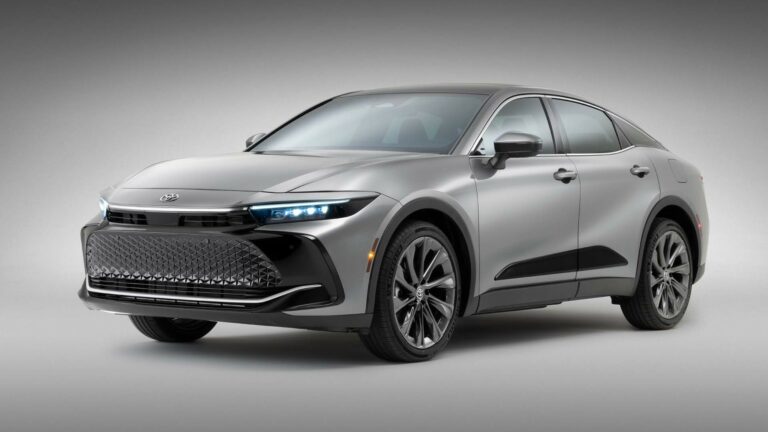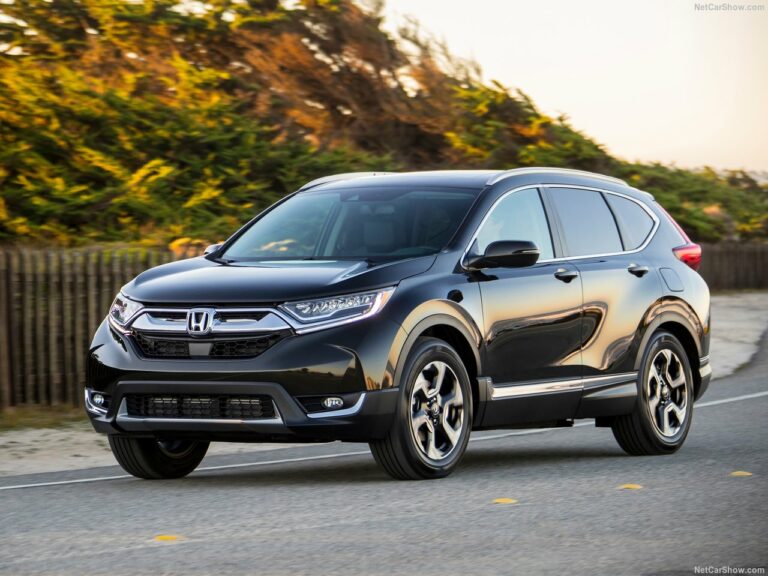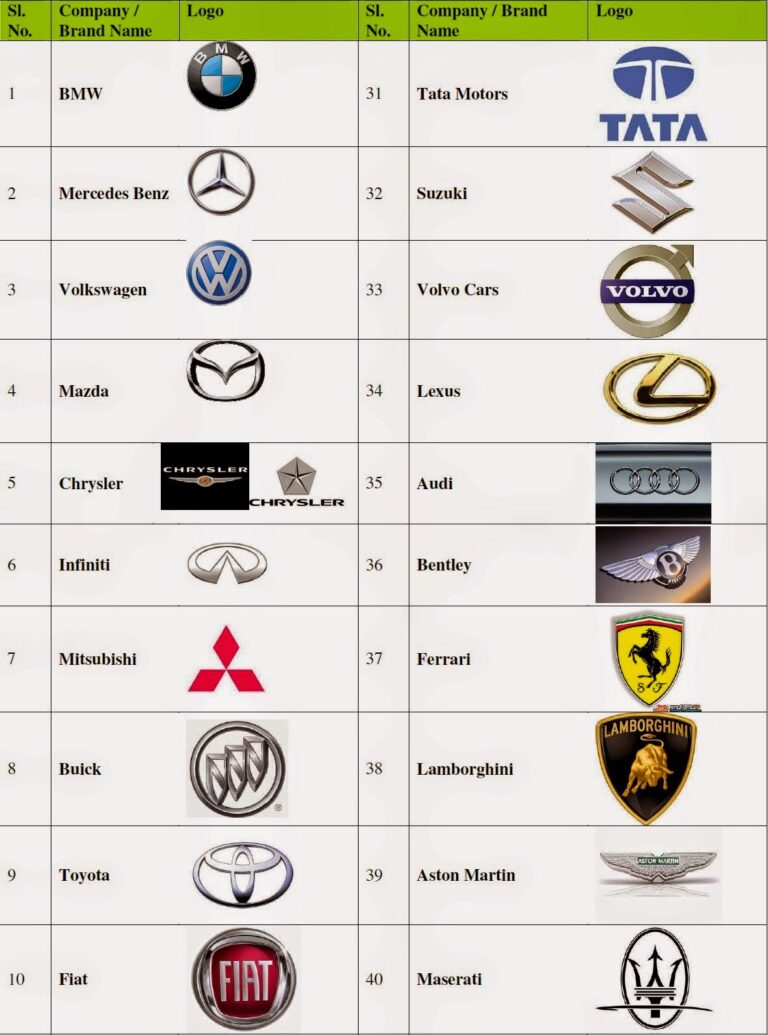Lease Brand New Car: Your Comprehensive Guide to Driving New Without Buying
Lease Brand New Car: Your Comprehensive Guide to Driving New Without Buying cars.truckstrend.com
The allure of a brand new car is undeniable: that fresh car smell, the latest technology, cutting-edge safety features, and the peace of mind of a full warranty. For many, the traditional path to driving a new vehicle involves a hefty down payment and years of financing. However, an increasingly popular alternative is emerging as a compelling choice for consumers: Lease Brand New Car. This approach allows you to experience the joys of a new vehicle every few years without the long-term commitment or depreciation concerns of ownership.
At its core, leasing a brand new car is essentially paying for the use of a vehicle for a set period, typically 24 to 48 months, rather than purchasing it outright. You’re not buying the car; you’re renting its depreciation over the lease term, plus interest and fees. This guide will delve into every facet of leasing a brand new car, from understanding its mechanics to navigating the process, ensuring you’re well-equipped to decide if it’s the right choice for your lifestyle and financial goals.
Lease Brand New Car: Your Comprehensive Guide to Driving New Without Buying
What Exactly is Car Leasing? Understanding the Fundamentals
To truly grasp the concept of leasing, it’s crucial to understand the key terms and how they differ from traditional car financing. When you lease, you’re primarily paying for the difference between the car’s initial value (its "capitalized cost") and its projected value at the end of the lease term (its "residual value").
- Capitalized Cost (Cap Cost): This is essentially the "selling price" of the car that the lease is based on. Crucially, this figure is negotiable, just like a purchase price. A lower capitalized cost means lower monthly payments.
- Residual Value: This is the estimated value of the car at the end of the lease term, expressed as a percentage of the MSRP. A higher residual value means the car is expected to depreciate less, resulting in lower monthly lease payments.
- Money Factor: This is the interest rate equivalent for a lease, often expressed as a very small decimal (e.g., 0.0025). To convert it to an approximate annual interest rate, multiply it by 2400 (0.0025 x 2400 = 6%). A lower money factor means lower interest charges.
- Lease Term: The duration of the lease agreement, commonly 24, 36, or 48 months.
- Mileage Allowance: The maximum number of miles you’re allowed to drive the car over the lease term without incurring penalties (e.g., 10,000, 12,000, or 15,000 miles per year). Exceeding this limit typically results in a per-mile charge (e.g., $0.15-$0.25/mile).

Unlike purchasing, where you build equity over time, leasing means you never truly own the vehicle (unless you decide to buy it at lease end). Instead, you enjoy the benefits of driving a new car without the burden of its full purchase price.
Why Lease? The Benefits of Driving Brand New

The appeal of leasing stems from several distinct advantages that cater to a specific type of driver:
- Lower Monthly Payments: Compared to financing the same car for the same term, lease payments are almost always significantly lower because you’re only paying for a portion of the car’s value (its depreciation) plus fees, not its entire purchase price.
- Always Drive a New Car: Leasing allows you to regularly upgrade to the latest models, typically every two to four years. This means you consistently benefit from the newest technology, safety features, fuel efficiency, and design.
- Lower Upfront Costs: While a down payment isn’t always required, the "due at signing" amount for a lease is often considerably less than the down payment needed for a purchase.
- Warranty Coverage and Maintenance: For most lease terms (especially 36 months or less), the vehicle remains under the manufacturer’s bumper-to-bumper warranty. This means unexpected major repairs are typically covered, offering peace of mind.
- Convenience and No Selling Hassle: At the end of the lease, you simply return the car to the dealership (assuming it meets wear and tear guidelines and mileage limits). There’s no need to deal with the complexities of selling a used car or negotiating a trade-in value.
- Tax Advantages for Businesses: For business owners, lease payments can often be fully or partially tax-deductible, offering a financial incentive.
The Leasing Process: A Step-by-Step Guide
Leasing a car might seem complex, but breaking it down into manageable steps makes it straightforward:
- Determine Your Needs & Budget: Before anything else, decide what type of car fits your lifestyle and, critically, what monthly payment you can comfortably afford. Consider your typical annual mileage to select an appropriate mileage allowance.
- Research & Compare Models: Not all cars lease equally well. Models with high residual values (i.e., those that hold their value better) typically have lower lease payments. Research lease deals from different manufacturers and dealerships.
- Understand Lease Terms: Familiarize yourself with the standard lease terms offered (e.g., 36 months, 12,000 miles/year). Consider how these align with your driving habits.
- Negotiate the Capitalized Cost (The "Selling Price"): This is arguably the most crucial step. Treat the capitalized cost as if you’re buying the car. Research the invoice price and market value, and negotiate this figure down. A lower cap cost directly translates to a lower monthly payment.
- Review the Lease Agreement: Read every line of the contract carefully. Pay close attention to:
- Money Factor: Ensure it’s competitive.
- Residual Value: Understand the buy-out price at the end.
- Mileage Allowance: Confirm it matches your needs.
- Excess Wear and Tear Guidelines: Understand what constitutes "normal" wear and tear versus chargeable damage.
- Early Termination Clause: Be aware of the potentially severe penalties if you need to end the lease early.
- Fees: Look for acquisition fees, disposition fees, and any other charges.
- Secure Insurance: Leased vehicles typically require higher insurance coverage (e.g., higher liability limits, comprehensive, and collision) than owned vehicles. You’ll also likely need GAP (Guaranteed Asset Protection) insurance, which covers the difference between what you owe on the lease and the car’s actual cash value if it’s stolen or totaled. Most leases include this, but always confirm.
- Drive Away! Once all paperwork is signed and understood, you’re ready to enjoy your brand new car!
Key Considerations Before You Lease
While attractive, leasing isn’t for everyone. Be mindful of these important factors:
- Mileage Limits: This is the most significant restriction. If you drive a lot, the per-mile penalty for exceeding your allowance can add up quickly. Be realistic about your driving habits.
- Wear and Tear: While normal wear and tear is accepted, anything beyond that (e.g., significant dents, scratches, stained upholstery, damaged tires) will incur charges at lease end.
- Early Termination is Costly: Breaking a lease early is almost always very expensive, as you’re typically responsible for the remaining payments and potentially other fees.
- No Equity Building: Unlike financing, you’re not building equity or ownership in the vehicle. At the end of the lease, you return it and have nothing to show for your payments.
- Credit Score Impact: To qualify for the best lease rates (lowest money factor), you’ll need a good to excellent credit score.
Tips for a Successful Lease
Maximize your leasing experience with these actionable tips:
- Know Your Credit Score: A higher score gives you more leverage for a lower money factor.
- Negotiate Aggressively: Always negotiate the capitalized cost (the "price" of the car). Don’t just focus on the monthly payment.
- Shop Around: Get quotes from multiple dealerships and compare the capitalized cost, money factor, and residual value.
- Avoid Large Down Payments: While a small down payment can lower monthly payments, if the car is stolen or totaled early in the lease, you could lose that money. Instead, put money towards reducing the capitalized cost if possible.
- Get GAP Insurance: As mentioned, this is crucial protection.
- Maintain the Vehicle Meticulously: Follow the manufacturer’s recommended service schedule and address minor dings and scratches before lease end to avoid excessive wear and tear charges.
- Understand End-of-Lease Options: At lease end, you typically have three choices: return the car, buy it out for the residual value, or sometimes extend the lease.
Potential Challenges and Solutions
Even with careful planning, challenges can arise. Here’s how to address common ones:
- Going Over Mileage:
- Solution: Estimate accurately upfront. If you realize you’re over halfway through, consider buying extra miles from the lessor at a reduced rate, or if the buy-out price is good, consider purchasing the car at lease end.
- Excessive Wear and Tear:
- Solution: Conduct a pre-inspection with the dealership a few months before lease end. This allows you time to fix minor issues yourself or through a trusted repair shop, which is often cheaper than the dealership’s charges.
- Needing to Get Out of a Lease Early:
- Solution: Explore lease transfer services (like Swapalease or LeaseTrader), which allow another person to take over your lease. Be aware that the original lessee may remain liable in some cases. Alternatively, you might buy out the lease and immediately sell the car, but this requires capital.
Lease Brand New Car: Hypothetical Price Table Example
Please note: These are purely hypothetical examples for illustrative purposes. Actual prices, money factors, and residual values vary significantly based on manufacturer, model, trim, current market conditions, promotions, credit score, and negotiation. Always get a personalized quote.
| Car Model (Trim) | MSRP (Approx.) | Negotiated Capitalized Cost | Lease Term (Months) | Annual Mileage Allowance | Residual Value (%) | Money Factor (Approx.) | Monthly Payment (Approx.) | Due at Signing (Approx.) |
|---|---|---|---|---|---|---|---|---|
| Compact Sedan | $28,000 | $26,500 | 36 | 10,000 | 58% | 0.0018 | $310 | $1,500 (1st pymt, fees) |
| Mid-Size SUV | $42,000 | $40,000 | 36 | 12,000 | 55% | 0.0022 | $485 | $2,000 (1st pymt, fees) |
| Luxury Crossover | $65,000 | $62,000 | 36 | 10,000 | 52% | 0.0025 | $790 | $3,000 (1st pymt, fees) |
| Electric Vehicle | $50,000 | $48,000 | 36 | 10,000 | 60% | 0.0015 | $495 | $2,500 (1st pymt, fees) |
Note: "Due at Signing" typically includes the first month’s payment, acquisition fee, taxes, and sometimes a small capitalized cost reduction.
Frequently Asked Questions (FAQ) About Leasing a Brand New Car
Q1: Is leasing cheaper than buying?
A: Monthly payments are almost always lower for a lease than for a purchase of the same car. However, over the long term, if you continuously lease, you’ll always have a car payment and never build equity. Buying can be cheaper in the long run if you keep the car for many years after paying it off.
Q2: Can I negotiate a lease?
A: Absolutely! You can (and should) negotiate the capitalized cost (the "selling price" of the car), the money factor (the interest rate), and sometimes even the residual value if it’s not set by the manufacturer.
Q3: What happens at the end of a lease?
A: You typically have three options: return the vehicle, purchase the vehicle for its residual value, or sometimes extend the lease.
Q4: What is GAP insurance? Do I need it?
A: GAP (Guaranteed Asset Protection) insurance covers the "gap" between what you owe on your lease and the car’s actual cash value if it’s stolen or totaled. It is highly recommended, and often required, for leased vehicles.
Q5: Can I get out of a lease early?
A: Yes, but it’s usually very expensive. You’ll typically owe the remaining payments and potentially early termination fees. Lease transfer services are a less costly alternative if you find someone to take over your lease.
Q6: Does leasing build equity?
A: No. When you lease, you are paying for the use of the vehicle and its depreciation, not building ownership equity.
Q7: What credit score do I need to lease a car?
A: Generally, you’ll need a good to excellent credit score (typically 680 FICO or higher) to qualify for the best lease rates (lowest money factor). Lessors are looking for low-risk borrowers.
Conclusion: Is Leasing Right for You?
Leasing a brand new car offers an attractive proposition for those who prioritize driving the latest models with lower monthly payments, consistent warranty coverage, and the convenience of avoiding long-term ownership hassles. It’s an ideal choice for individuals who enjoy driving a new vehicle every few years, have predictable mileage, and prefer not to deal with vehicle depreciation or selling a used car.
However, if you drive excessive miles, are prone to vehicle damage, prefer to build equity, or like to customize your vehicles, purchasing might be a more suitable path. By thoroughly understanding the mechanics, benefits, and considerations outlined in this guide, you can make an informed decision that aligns perfectly with your financial situation and driving lifestyle, ensuring you hit the road with confidence in your brand new, leased vehicle.







